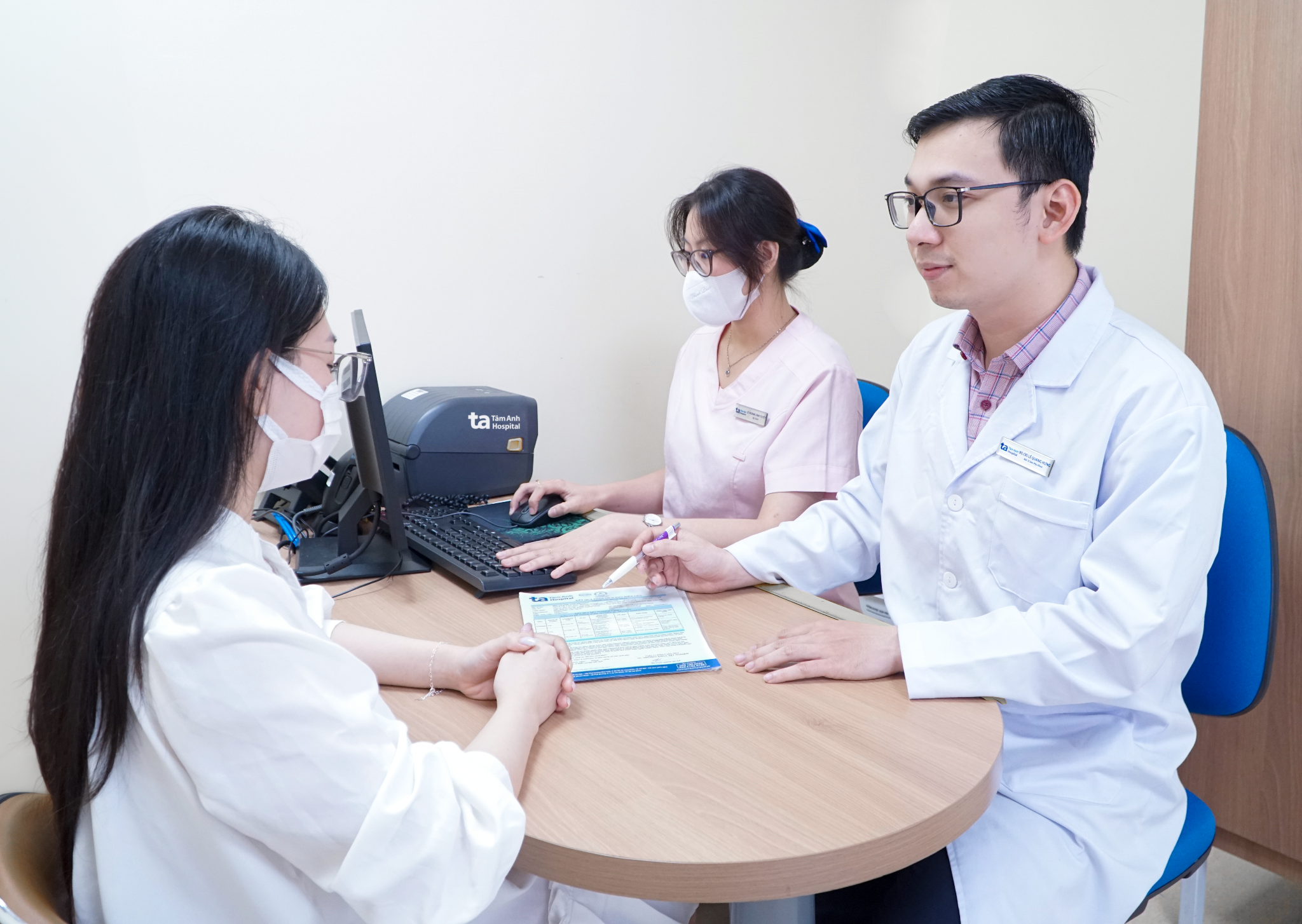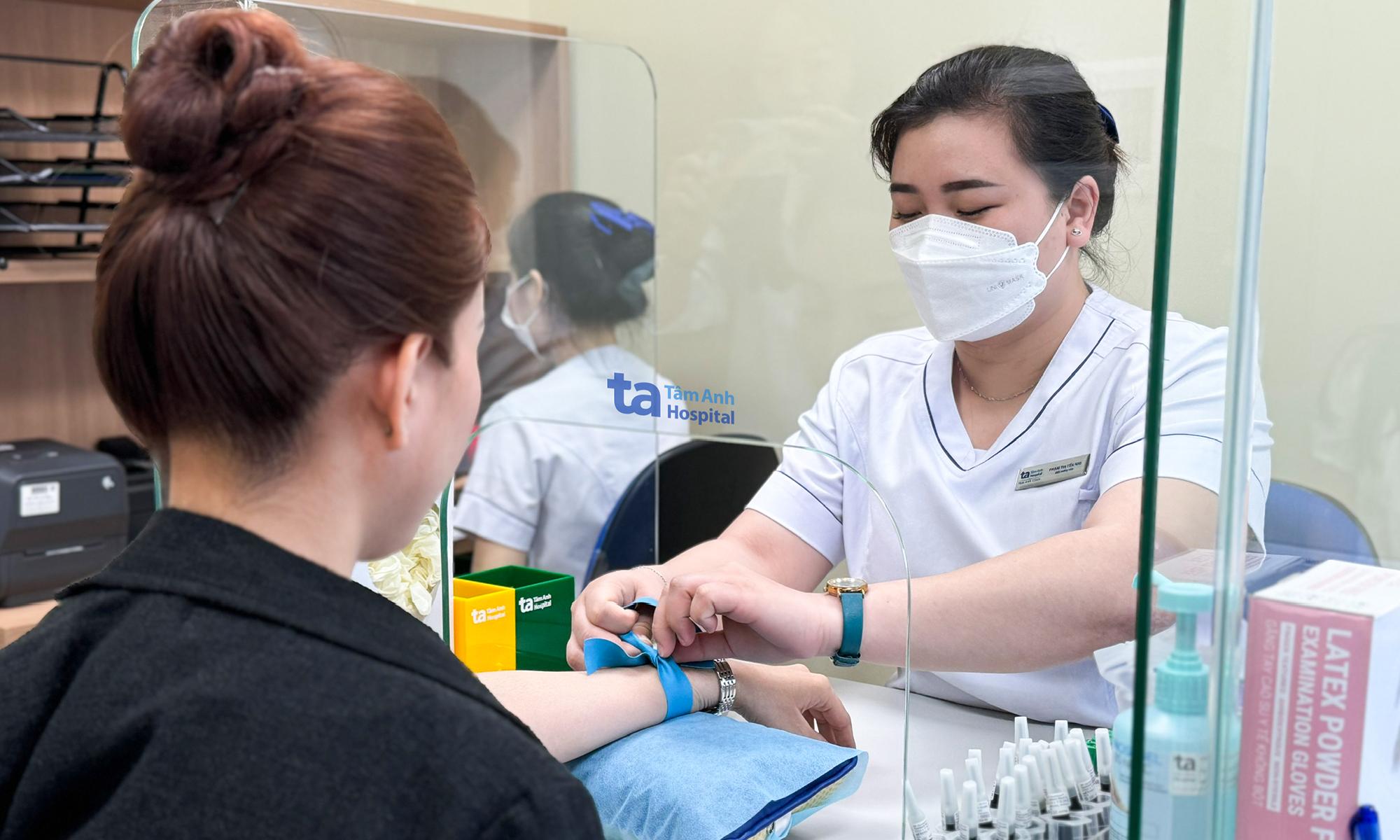An ultrasound at the Fetal Medicine Center, Tam Anh General Hospital, TP HCM, showed increased middle cerebral artery peak systolic velocity (the highest blood flow velocity during systole - when the heart contracts) and a thickened placenta. According to Doctor Le Quang Hung, these signs indicated that the fetus might have fetal anemia, which could lead to fetal heart failure, fetal hydrops, and fetal demise.
Amniocentesis confirmed that the fetus had homozygous alpha-thalassemia with Hb Bart's hydrops fetalis. This condition prevents the body from producing the alpha-globin chains needed to create normal hemoglobin. Instead, it produces an abnormal hemoglobin called Hb Bart's, which cannot transport oxygen effectively.
The fetus was at risk of prolonged severe anemia, heart failure, enlarged liver and spleen, and growth abnormalities. The mother faced the risk of mirror syndrome associated with fetal hydrops, including swelling in the extremities, pre-eclampsia, eclampsia, postpartum hemorrhage, and severe postpartum infections. Tests confirmed that both Be and her husband carried the heterozygous alpha-thalassemia gene with the SEA deletion. In this case, for each pregnancy, there was a 25% risk of the fetus developing severe anemia and hydrops fetalis (Hb Bart's), a 50% risk of carrying the thalassemia gene like the parents, and a 25% risk of not carrying the gene at all. Faced with these risks to the mother's health and the fetus's severe condition, the couple made the difficult decision to terminate the pregnancy.
 |
Doctor Hung counsels an expectant mother. Photo illustration: Tam Anh General Hospital |
Another couple, Than, 32, and her husband, also carry the heterozygous alpha-thalassemia gene with the SEA deletion. At 27 weeks of pregnancy, an ultrasound at Tam Anh General Hospital, TP HCM, revealed severe intrauterine growth restriction, an enlarged heart, fetal anemia, and placental edema in their fetus.
To quickly and accurately diagnose the fetus's anemia, Doctor Hung performed fetal cordocentesis. This specialized diagnostic procedure involves using a small needle, guided by ultrasound, to pass through the abdominal wall and uterus into the umbilical vein to collect a small amount of fetal blood. The results confirmed hydrops fetalis and anemia caused by the homozygous alpha-thalassemia gene with Hb Bart's. After receiving comprehensive counseling about the fetus's condition and the risks to the mother, the couple decided to continue the pregnancy. However, by week 35, the fetus's condition worsened, resulting in a stillbirth.
Dieu, 33, and her husband also both carry the heterozygous alpha-thalassemia gene with the SEA deletion. During her first pregnancy, amniocentesis showed no abnormalities, and she gave birth to a healthy baby in 2022. With her second pregnancy, amniocentesis diagnosed homozygous alpha-thalassemia with Hb Bart's hydrops fetalis, leading to the termination of the pregnancy.
During Dieu’s current pregnancy, Doctor Le Quang Hung performed chorionic villus sampling at 12 weeks (providing results earlier than amniocentesis), which revealed that the fetus only carries the heterozygous thalassemia gene. This means the fetus has the same anemia gene type as the parents.
"The baby is likely to be born healthy or with very mild anemia that doesn’t require treatment", Doctor Hung said. He advised Dieu to continue with regular prenatal checkups, follow a suitable diet and rest regimen, and monitor the baby's development.
 |
Genetic blood screening before pregnancy. Photo: Tam Anh General Clinic, District 7 |
Thalassemia is a recessive genetic disorder caused by defects in hemoglobin synthesis, leading to anemia and congenital hemolysis. There are two main types: alpha-thalassemia and beta-thalassemia. Children with mild forms may experience mild anemia. In severe cases, the fetus may die in utero or be born with severe anemia requiring lifelong blood transfusions, along with complications like developmental delays, heart failure, cirrhosis, bone deformities, and endocrine disorders.
Vietnam has 13.8 million people (13% of the population) carrying the thalassemia gene, with over 20,000 people suffering from the severe form requiring lifelong treatment. An estimated 8,000 children are born with thalassemia annually, including approximately 2,000 with the severe form. According to Doctor Hung, Vietnamese people are at high risk of carrying the thalassemia gene, and couples should be screened before pregnancy to reduce the risk for their children.
If both parents carry the alpha- or beta-thalassemia gene, there's a 25% chance with each pregnancy that the fetus will have Hb Bart's hydrops fetalis or severe beta-thalassemia. Doctors recommend early prenatal diagnosis through chorionic villus sampling or amniocentesis to determine if the fetus has a severe form of the disease. In some cases, fetal cordocentesis may be necessary for a quicker diagnosis within a few days to make informed decisions. For couples opting for in vitro fertilization, preimplantation genetic testing (PGT) can be used to eliminate embryos with Hb Bart's mutations before embryo transfer.
Ngoc Chau
* Patient names have been changed
| Readers can submit questions about pregnancy and childbirth here for doctors to answer |












